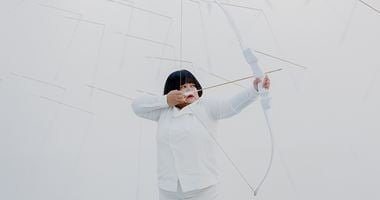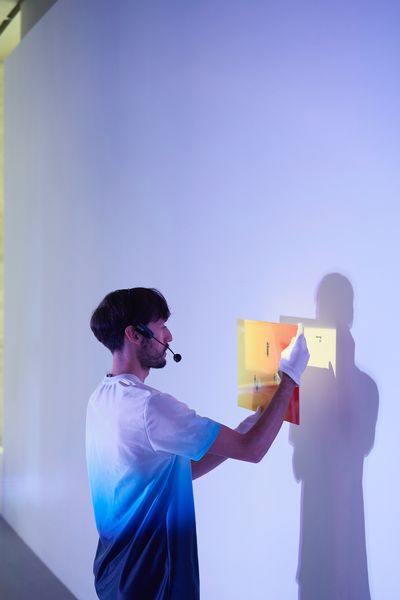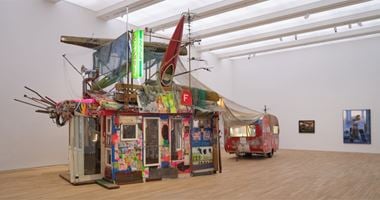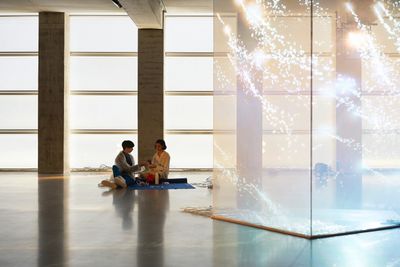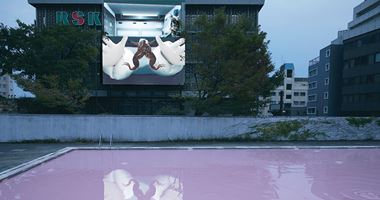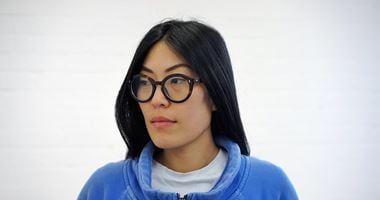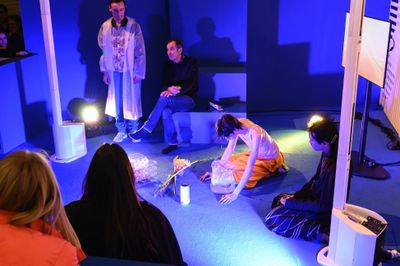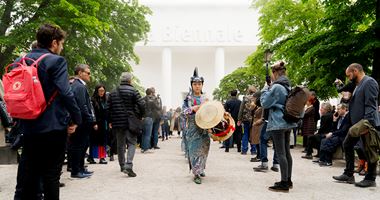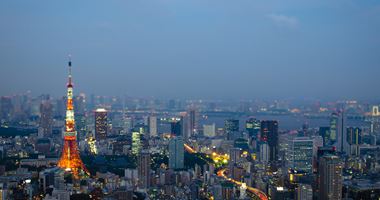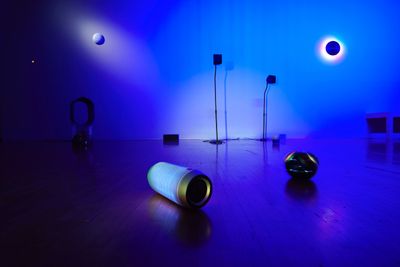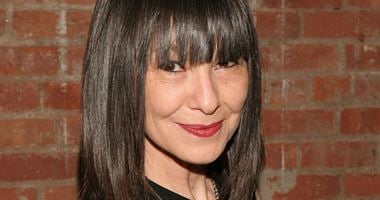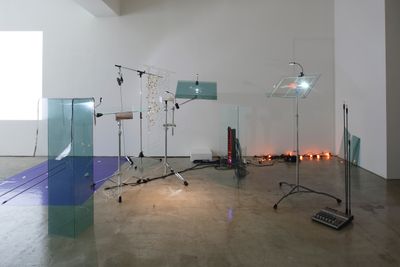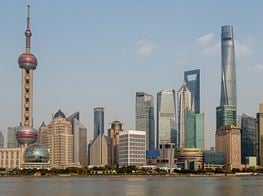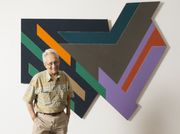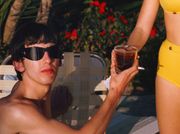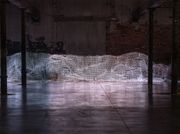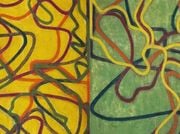Nile Koetting: Remain Calm
Nile Koetting performing Remain Calm, Centre Pompidou x West Bund Museum Project, Shanghai (7 December 2019–8 January 2020). Courtesy Centre Pompidou x West Bund Museum Project. Photo: Tang Lijun.

Nile Koetting performing Remain Calm, Centre Pompidou x West Bund Museum Project, Shanghai (7 December 2019–8 January 2020). Courtesy Centre Pompidou x West Bund Museum Project. Photo: Tang Lijun.
American-Japanese artist Nile Koetting's performative exhibition Remain Calm (7 December 2019–8 January 2020) at the Centre Pompidou x West Bund Museum Project in Shanghai, presented a choreographed vision of catastrophe.
Inspired by childhood memories of simulation drills held in his high school in Japan, Koetting's scenography was held in the museum's dedicated contemporary art space, Gallery 0, and comprised loosely scripted performances accompanied by a ten-hour sound composition, videos, lighting, and an array of props—including tea, puzzles, swimming towels, and flowers arranged daily—that provided a sense of quotidian familiarity to an otherwise disembodied scenario.
Visitors in the space found themselves immersed in projected scenes of floods, fires, and explosions, further accompanied by smart technologies primarily operated by robots. Such a premise, though unsettling for some, proved to be somewhat prophetic given its immediate social context.The convergence of performers, visitors, artists, robots, and mundane household objects in open space allowed a sense of 'togetherness', as expressed by Koetting in the exhibition leaflet. In the exhibition catalogue, a map-like diagram delineates the geography of the space, which includes words such as 'Rehearse', 'Recall', 'Redress', 'Rebound', and 'Repose', grounding the performances in a vague yet more specific context than the script, which was written in flyers in the space. Different from other modes of live performance, the artist envisioned two forms of production, fluidly alternating between a preprogrammed setting implemented by 'smart robots', and meditative 'drills' orchestrated by human performers.
With such a range of interactive experiences available in the space, the exhibition attracted repeating visitors, including one artist who, on his fourth visit, described the experience as a visual and psychological 'massage', despite its references to catastrophe. In this conversation, Koetting elaborates on this calculated balance and how it manifests in his wider practice.
PLWith the current spread of COVID-19, it feels somewhat prophetic to be discussing your recent solo exhibition, Remain Calm, at the Centre Pompidou x West Bund Museum Project. It was almost a rehearsal for what is happening here, although now we are taking refuge at home rather than the museum. Could you discuss your inspiration behind the work?
NKThis work was inspired by my experience of evacuation drills in elementary school in Japan. We were informed by the school of the day on which the drill would be held, but not the time. We were in class as usual when there would suddenly be an earthquake announcement. At the same time, for several minutes, the speaker emitted recorded rumblings and the sound of buildings collapsing. We students all crawled under our desks, but slowly, without rushing. After the noise, smoke from a fog machine began to seep out of the science room, indicating that a fire had broken out. We each calmly took the hand of a fellow student and evacuated to the schoolyard, avoiding the science room.
When I recall these drills that were very common in Japan, it strikes me that the whole thing was like a gentle performance, without any audience. The strange and nebulous linkage between us students, the simulated reality, and the role-playing relationship—I think it softly resonates with today's hyper insecure time-space that is surrounded by limitlessly manufactured facts.
PLCould Remain Calm be considered a summary of your recent works?
NKRemain Calm may be the most composite of my works in recent years. I wouldn't call it a summary, but it may appear to link all sorts of experiments I have conducted so far in all sorts of forms.
PLIn 2019, the project was exhibited across four locations: Kunstverein Göttingen, Palais de Tokyo, Klosterruine Berlin, and the Centre Pompidou x West Bund Museum Project. What are the differences between the work's iterations?
NKThis project evolved from Reset Moment, my research project conducted during my stay at Cité internationale des arts in Paris. For this research, I looked into preparations that museums and other cultural institutions, mainly near the Seine, have made to safely evacuate collections and visitors in the event of floods or other disasters. It was in Göttingen that I first showed a work that attempted to realise my research from that time.
Through my projects, I pursue an interest in networked ties between audience members.
This was followed by Remain Calm 20%, shown as part of Palais de Tokyo's Do Disturb festival in 2019. There, I asked myself how visitors could enjoy themselves safely. As a result, I made a compact performance that resembled something like the safety instructions on an airplane before take-off that visitors could watch while sipping some relaxing tea. In each project, I tailored the underlying narrative by considering how the work would blend with the context of the venue in question. Each project is independent, but you could say that they all share the same spirit.
PLFor the iteration at the Centre Pompidou x West Bund Museum Project, you designed an app for performers that was connected to all the objects in the exhibition hall. This approach equates the performers to other exhibiting objects and robots. What role does technology play in your work?
NKYes, every morning the performers were sent text messages to inform them of their roles. The smartphone application was linked to the actual time and score and displayed each performer's choreography, thus discharging the function of a live choreographer. This application also synchronised the sound and lighting, so that the whole space became a single, closed biosphere. The app functioned as a management of the performance, encoding it, so that the lighting, sound, robots, and video operated in line, together. In a sense, it enabled their handling as organic entities composing the installation.
The application and the online setup could be regarded as the script and choreography used as tools for building and maintaining relations among actors in classical theatre. An example here is Line, Japan's most popular messaging application that was launched in response to the Great East Japan Earthquake. It became a very valuable tool for getting information on the safety of loved ones. If the lifelines on a stage are elements such as lighting and script, smartphone applications could also become important constituents.
PLBy including domestic items, you allow the concept of a disaster to be understood on a personal level. However, the scenes you create also intend to beautify the future, suggesting that people can still drink tea or arrange flowers during a disaster. This attitude is very different from the imagination and contingency of disasters communicated by Western films, for example. Where do activities of tea-drinking and flower-arranging sit in this work?
NKBesides being a climax, the disaster simulation occurred around every 25 minutes, and functioned as a kind of reset, along the lines of an intermission. As in the school evacuation drill, the action taken by students is highly choreographed to eliminate all unnecessary movement. I felt that was a kind of formalised etiquette and manner. I think that traditional Japanese pursuits or manners such as the tea ceremony and ikebana function like a psychological and spiritual network mediated by encoded ceremonial elements and the people sharing everyday life and space embedded with them.
In the work, I did not bring such elements directly into the performance, but as the scene rapidly changes, I thought that acts such as drinking tea could be tools that network the performers and members of the audience, like spiritual ties between the space and the performers. In addition to a change of scenography, intermissions are also times for members of the audience to drink something and talk with others.
PLThe smart robot Tipron that you chose to use in Remain Calm was another highlight of this exhibition. The company that produces the robot, Cerevo, is relatively niche. How did you come to work with Cerevo? What are your criteria when selecting objects such as these?
NKIn recent years I have gotten involved in projects with start-up companies and firms developing products that apply new technologies. For example, Sustainable Hours (2017) was partly made in collaboration with InfinityPV, a company that makes translucent solar panels. To my mind, the research of new products in the process of art creation resembles the process of blending pigments in traditional painting. The distinctive character of each product is the same as that of a performer. Ultimately, I think the most important thing is to imagine the kind of harmony that those products, human performers, and space can engender.
PLIn addition to Tipron, there were also Sphero BOLTs, which are spherical robots. These robots had their own performance paths in the exhibition. How did you alternate between robots and human performers in the exhibition?
NKIn the work, there is a fluid alternation between two settings: 'The Introspective Drill', activated by performers, and the 'Actionable Setting'. In the latter, the involvement of the audience with the scenography was a particular focus. It was programmed so that the bodies and behaviour of the audience functioned as part of the installation, for example when visitors entered the space. Oddly enough, while some chance came into play, Tipron and Sphero, the choreographed objects, played the role of connecting the audience and scenography. The audience's movement and behaviour likewise changed with the cultural sphere and venue of presentation.
PLYour work Sustainable Hours (2016), which was on view at Maison Hermès in Tokyo, is also related to sound, and you have designed sound for many other performances and theatre groups. How does your practice in sound influence your work?
NKI think of music as a performer. In the Sustainable Hours project I made at Maison Hermès, the initial point of departure was an audio work. Wondering how I could arrange sound as invisible vibrations in the space led me to incorporate other invisible items such as fragrance, WiFi, light, and humidity. In reference to this work, the term 'ambiance interieur' goes down better with me than 'sound installation'. Through my projects, I pursue an interest in networked ties between audience members. In this pursuit, music is an extremely powerful medium that can influence everything in the exhibition room and the visitors simultaneously. And there are still a lot of discoveries to be made with it.
In everyday life, there are many tools for assessment or valuation, and the vital thing is being capable not of empathy, but resonance.
PLWould you consider your smaller projects, such as ESSE (2014), Hard in Organics (2015), Whistler (2016), and All in One / Terra Mater (2018) as case studies for your larger scenographies?
NKThere is no particular precedence among the works based on size or context. The works are always born amid relations with all sorts of parties, such as the performers, event organiser, curator, gallery owner, or whoever. It is not unusual for some happenstance to turn out to be an element that the work should have. Scale or size are constituent elements that should be right for the work in question.
Naturally, ideas in one project often connect with a different project. For example, Nothing Left, which I presented at the Berlin theatre HAU Hebbel am Ufer in 2016, was developed as a scenography on the main stage, where DJs and musicians were performing for a musical event. The experience of being asked to do the actual scenography then was important learning that served me in good stead when I produced Remain Calm.
PLHow does scenography differ from dramaturgy for you?
NKIn installation space, I am interested in dramaturgical perspectives, such as the movement of the audience, and how to brew an atmosphere. In theatres and performance-type contexts, on the other hand, I constantly experiment with installation thought and methods deriving from scenography. It is a basic approach for me to think about the context in which the work should be existing.
PLYou work across multiple media, which means that your artistic body is unclear and blurred. This may create a barrier for some people who think art should be intellectual. What do you think about this?
NKUnclear or blurred states are of crucial importance to me. As the philosopher Timothy Morton remarked, 'There are no not in-between states: dreaming is being between awake and sleeping; being alive is in between being born and being dead; being right is in between being perfect and totally wrong. Not that the middle is a solid, constantly existing thing.' These words go well with the state of in-betweenness, in which I feel there is so much possibility.
To put it in the extreme, method and technique for me are like tools for causing failure or error in the process and confirming different things. The important question is whether or not you notice other possibilities then. To my thinking, 'intellectual' indicates a high sensitivity to searching for possibilities. In everyday life, there are many tools for assessment or valuation, and the vital thing is being capable not of empathy, but resonance.
PLWould you consider your role akin to that of an artistic director or producer? In Remain Calm, where are you as an artist?
NKIn the process of creation, some steps are like production and others are like direction. To me, the best characterisation of the position of 'artist' would be where the work finally lands. I am not particularly conscious of any qualification for being an artist. I like to think of the role of an artist as a kind of safety net for the safe landing of themes and ideas that are born in the process, rather than being a generator of something. The stronger the safety net, the greater the diversity of things that can exist.
PLYou have collaborated with other creators in your works, such as the author Miriam Stoney in Remain Calm, in a way that is quite organic. What is the basis for consensus in these works? How do you ensure that everyone involved is serving the work?
NKI too like the expression 'organic'. In the creation of a work, I think it is crucial for the work to be reinterpreted in the context of mutual involvement, without setting any fixed goal in advance. In my collaboration with Miriam, the text she wrote somehow paved the way, like a dramaturgy for the installation. The output of my installation also sometimes influences her text. When engaged in production, it is important to safeguard the delicate space enabling everyone, myself included, to make mistakes or fail. When you depend on a verbal agreement or professionalism, you end up narrowing the possibilities for expression that goes beyond anticipations. This approach might seem risky to others, but I think that an airy stance of this type is precisely what is needed to continue something.
PLDuring your talk with curator Marcella Lista on Ways of Seeing at the museum on 7 December 2019 you asked the following questions: Do we always make sense? How do we use language? How might it be possible for viewers to treat your work as the answer to these questions?
NKEach work is constrained by its times and is born into a reality that requires compromise. If it is an answer, it may contain many errors. When I view my works during the exhibition, every day I tend to notice something that I didn't see before. I would like the presentation of a work to provide space where there can be feedback about such discoveries between the viewer and the work. The communication between viewers and works is like a dialogue in a language without a single native speaker. There is no answer per se; if anything, some sort of answer is perhaps hidden in the very process of conversation.
PLYou have mentioned the impact of butoh dance on your work. Further to that, you have experience as a fashion model and a dancer—occupations in which the 'pose' could be seen as a form of code. Could you expand on these influences?
NKMany of the butoh sessions I experienced handled textures that were very much like mental images. It is the procedure of using words and images and transferring them to a physical state. I had a strong impression at the time that it was training for how to upload external space and information into my own body, as opposed to the action of creating something.
Through this process, I felt that I could access various states from my body. I think it would be more accurate to frame this state as the body transforming into something, rather than the image of the body in freedom. Maybe this method is like deep learning happening in the body, because you don't know what comes out in the end. I think it's more exciting to think of the body as a black box rather than being in a blank state. —[O]



